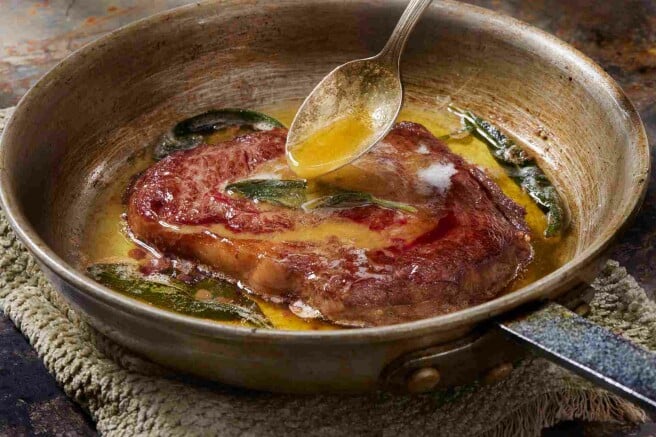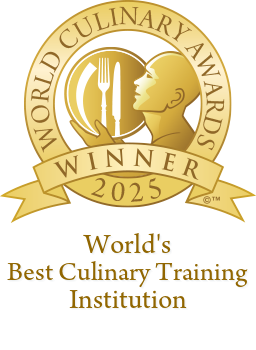Mastering the art of French cooking

Renowned for its rich flavors, meticulous preparation and exquisite presentation, French cuisine holds a revered place in the hearts of all chefs, from experts to beginners. In this article, we look into the essence of French cooking, exploring its history, principles and essential techniques that elevate it to an art form. Whether you're a seasoned chef or an aspiring home cook, join us as we unlock the secrets of French culinary mastery and embark on a delicious voyage through the heart of these incredible dishes.
A brief history of French cooking
The origins of French cooking can be traced back to ancient times, with early influences from Celtic, Roman and Gallic culinary traditions.
These ancient civilizations introduced ingredients such as wine, garlic and olive oil, laying the foundation for the flavors and techniques that would come to define French cuisine.
During the Middle Ages, French cuisine underwent a significant transformation, shaped by the influences of medieval nobility, religious orders and trade routes.
Spices such as saffron, cinnamon and cloves were prized commodities, imported from distant lands and used to flavor and preserve foods, which formed the basis for a lot of French food we know today.
The Renaissance period brought about a golden age of French cuisine, marked by culinary innovation, refinement and sophistication.
The French court, under the patronage of kings and queens such as Catherine de Medici and Louis XIV, became a center of gastronomic excellence, attracting renowned chefs and culinary talent from across Europe.
France's diverse landscape and regional diversity have long been a source of culinary inspiration, with each region boasting its own unique cooking traditions, ingredients and flavors.
From the hearty stews of Brittany to the delicate pastries of Provence, French regional cuisine reflects the harvest of the land, the bounty of the sea and the rich tapestry of cultural influences that have shaped the nation's culinary identity.
The advent of nouvelle cuisine in the 20th century revolutionized French cooking, emphasizing lighter, more delicate dishes and seasonal ingredients.
Today, French cuisine remains a global culinary powerhouse, influencing chefs and food enthusiasts around the world with its timeless elegance, impeccable technique and unparalleled artistry.

Essential techniques in french cooking
At the heart of French cuisine lies a repertoire of essential skills that form the foundation of many of the classic foods in French restaurants.
From sauce making to precise knife skills, mastering these techniques is essential for aspiring chefs and home cooks alike seeking to unlock the secrets of French cooking.
Sauce making
French cuisine is renowned for its complex and flavorful sauces, which push dishes to new heights of gastronomic delight. Some essential sauce-making techniques include:
-
Reduction: simmering liquids such as stocks, wine or cream to concentrate flavors and create a thicker consistency
-
Emulsification: combining two liquids such as oil and vinegar to create a stable, creamy sauce, as seen in mayonnaise or hollandaise
-
Roux: a mixture of flour and fat used as a thickening agent for sauces and soups. It can be cooked to different stages for varying levels of flavor and color
-
Deglazing: adding liquid to a pan to loosen flavorful browned bits from the bottom, which are then incorporated into the sauce for added depth of flavor
Knife skills
Precision knife work is essential in French cooking to ensure uniformity in cooking and presentation. Some of the key knife techniques include:
-
Julienne: cutting vegetables into thin, uniform matchsticks
-
Brunoise: finely dicing vegetables into small cubes, typically used for aromatic ingredients such as onions, carrots and celery
-
Chiffonade: rolling leafy greens or herbs tightly and slicing thinly to create delicate ribbons
-
Tourner: shaping vegetables into uniform barrel shapes, often used for potatoes and carrots
Cooking techniques:
French cuisine employs a variety of cooking methods to enhance flavors and textures. A few essential techniques to know are:
-
Sautéing: cooking food quickly over high heat in a small amount of fat, often used for searing meats or vegetables
-
Braising: slow-cooking meat or vegetables in a flavorful liquid, such as stock or wine, to tenderize and infuse with flavor
-
Roasting: cooking food in the oven at high heat, which caramelizes the exterior while keeping the interior moist and tender
-
Poaching: cooking delicate foods, such as fish or eggs, in gently simmering liquid to retain moisture and impart subtle flavors
Pastry and baking:
French pastry and baking are known for their precision and attention to detail. Some essential techniques include:
-
Pâte brisée: a classic French pastry dough made with flour, butter, water and salt, used for savory tarts and quiches
-
Pâte sablée: a sweet pastry dough made with flour, butter, sugar and sometimes egg yolks, used for desserts such as tarts and tartlets
-
Pâte à choux: a versatile pastry dough used to make profiteroles, éclairs and cream puffs, known for its airy texture and ability to puff up when baked
-
Folding: a technique used to incorporate air into batters and doughs while maintaining their structure, commonly used in making soufflés, meringues and puff pastry
Plating and presentation:
There is great importance placed on the visual presentation of dishes in French cuisine, often showcasing ingredients with artistic flair. Some plating techniques include:
-
Layering: arranging ingredients in layers to create visual interest and depth on the plate
-
Quenelle: shaping soft foods, such as mousses or ice cream, into oval shapes using two spoons for an elegant presentation
-
Garnishing: adding decorative elements, such as fresh herbs, edible flowers or citrus zest, to improve the visual appeal and flavor of the dish
-
Negative space: using the empty space on the plate to highlight the focal point of the dish, allowing it to stand out and capture the diner's attention
Key recipes in French cooking
French cuisine is renowned for its iconic dishes, each showcasing the rich flavors, meticulous preparation and elegant presentation that define its essence.
There’s no one definitive cookbook, but below are some key recipes that represent the heart and soul of the French culinary tradition:
-
Coq au vin: chicken braised in red wine with mushrooms, onions, bacon and aromatic herbs. Slow-cooked to perfection, coq au vin is a hearty and flavorful dish that epitomizes the rustic elegance of French country cooking
-
Boeuf bourguignon: a rich and savory beef stew made with tender chunks of beef, pearl onions, carrots and mushrooms, simmered in red wine until meltingly tender. Served with crusty bread or creamy mashed potatoes
-
Ratatouille: a vibrant vegetable stew made with tomatoes, eggplant, zucchini, bell peppers, onions and garlic, simmered together until tender and flavorful. This colorful and aromatic dish is a celebration of summer produce
-
Bouillabaisse: a traditional French stew made with a variety of seafood such as fish, shellfish and crustaceans, simmered in a flavorful broth of tomatoes, saffron, garlic and herbs. Served with a garlicky mayonnaise and crusty bread
-
Quiche Lorraine: a buttery pastry crust filled with a creamy custard made with eggs, cream, bacon and gruyère cheese. Quiche Lorraine is a versatile dish that can be enjoyed for breakfast, brunch or as a light lunch or dinner.
-
Tarte tatin: a rustic French dessert made with caramelized apples baked in a buttery pastry crust. Inverted after baking to reveal the golden caramelized apples on top, tarte tatin is best served warm with a dollop of crème fraîche or vanilla ice cream
-
Crème brûlée: a rich and creamy custard topped with a layer of caramelized sugar. Served in individual ramekins, crème brûlée is beloved for its contrasting textures
How can I learn French cooking?
Whether you're an aspiring chef looking to embark on a culinary career or a home cook eager to expand your culinary repertoire, there are various avenues available to learn the art of French cooking.
Culinary schools and degree programs
These programs typically cover a wide range of topics, including knife skills, sauce making, pastry and baking, as well as French culinary history and culture. Graduates of culinary degree programs often pursue careers as professional chefs in restaurants, hotels and catering companies or become entrepreneurs in the culinary field.
Short courses and workshops
These courses may focus on topics such as French pastry, regional cuisine or classic French dishes, allowing participants to gain hands-on experience and practical skills in a shorter period.
Short courses are ideal for enthusiasts and home cooks looking to boost their culinary skills without committing to a long-term program.
Online cooking classes
With the rise of online education, there is an abundance of virtual cooking classes and tutorials available for aspiring chefs and home cooks alike.
They offer a wide range of courses covering various aspects of French cooking, from basic techniques to advanced recipes.
These classes often feature video demonstrations and step-by-step instructions.
Cookbook and recipe exploration
Invest in classic French cookbooks authored by renowned chefs such as Julia Child, Jacques Pépin and Paul Bocuse.
Experiment with French recipes that pique your interest.
Cooking from scratch allows you to practice fundamental techniques and gain a deeper understanding of French culinary traditions while honing your skills in the kitchen.
Culinary tours and travel
For a hands-on and immersive experience, consider participating in culinary tours and travel experiences in France.
This offers the opportunity to explore regional cuisine, visit local markets and producers and learn from chefs through cooking classes and demonstrations.
Apprenticeships and internships
Seek out opportunities to apprentice or intern at French restaurants, bakeries or pastry shops, where you can learn from experienced chefs and gain practical skills through hands-on training.
Internships offer a structured learning experience and may lead to employment opportunities or further advancement in the culinary industry and they are a vital part of most culinary degrees.
Conclusion
Mastering the art of French cooking is a rewarding journey that offers a lifetime of culinary exploration and discovery.
From classic techniques and sumptuous recipes to the rich history and cultural heritage of French cuisine, there is always something new to learn and savor.
Whether you're pursuing a career as a professional chef or simply seeking to improve your home cooking skills, the world of French cuisine offers a wealth of opportunities for growth, creativity and enjoyment.
By approaching your culinary education with curiosity, enthusiasm and a willingness to experiment, you'll discover the joy of creating delicious meals that celebrate the time-honored traditions and flavors of French cuisine.
If you want to take your learning to the next level and prepare for a life as a chef, see how a culinary degree from a trusted school such as Ecole Ducasse could help.


